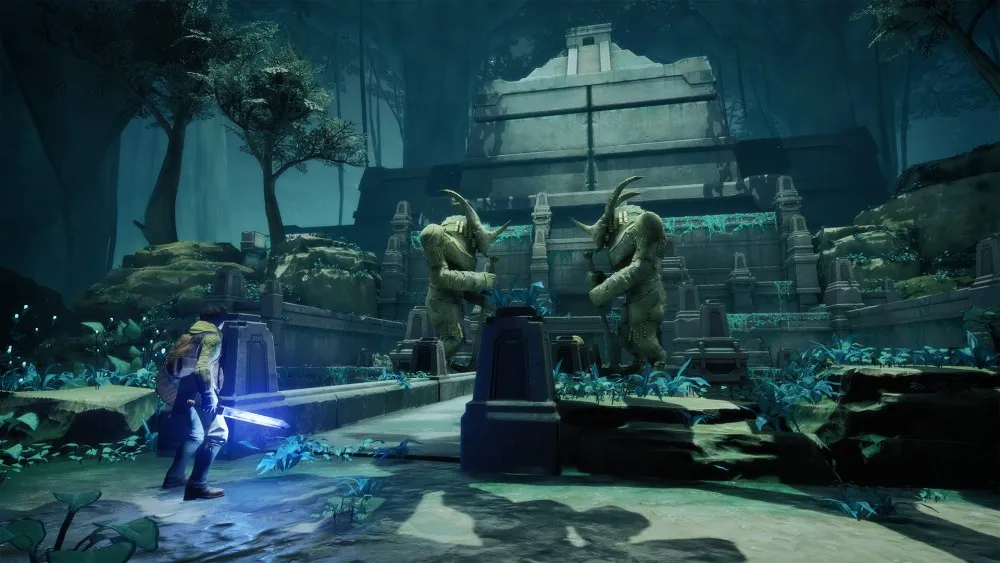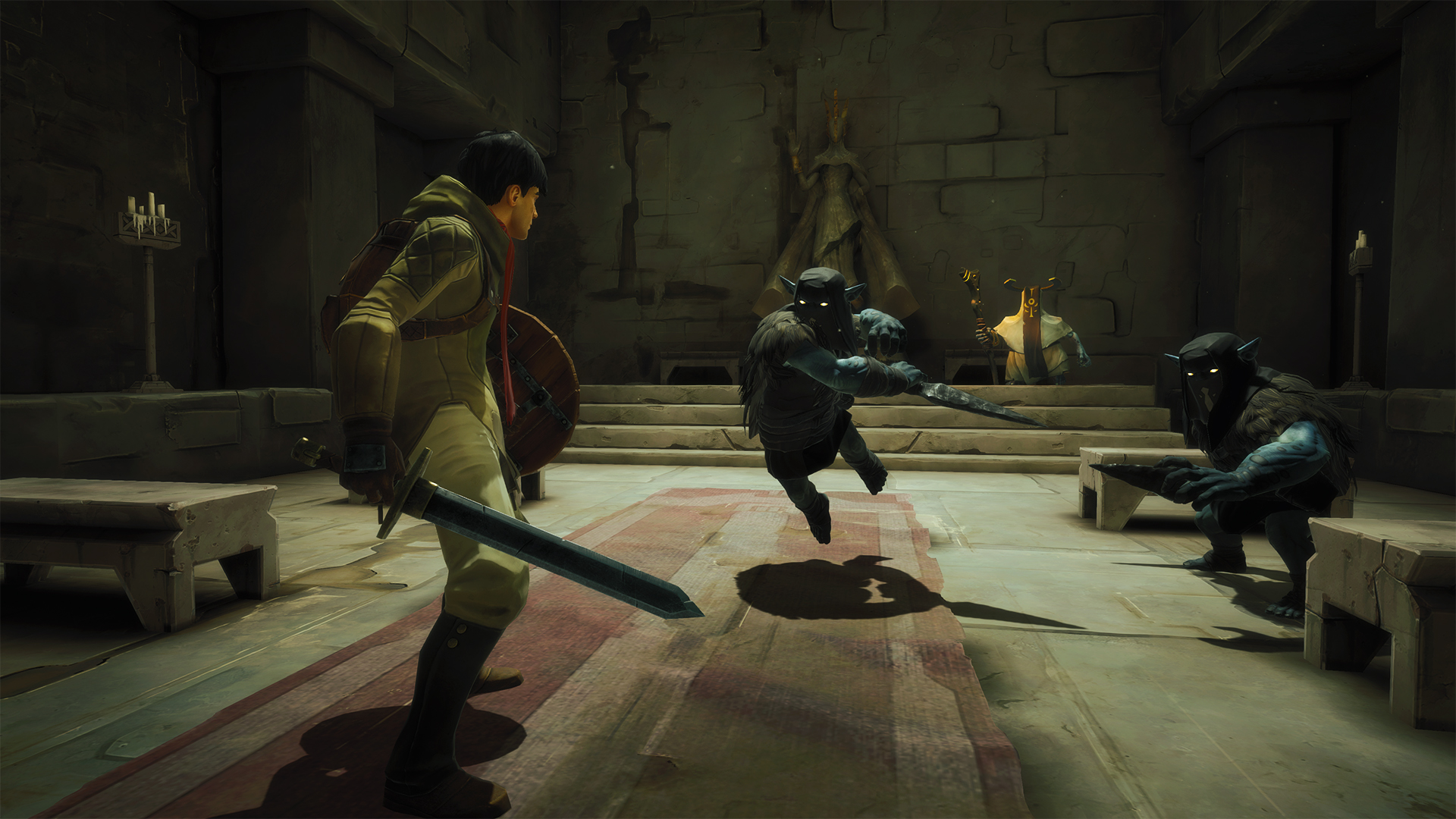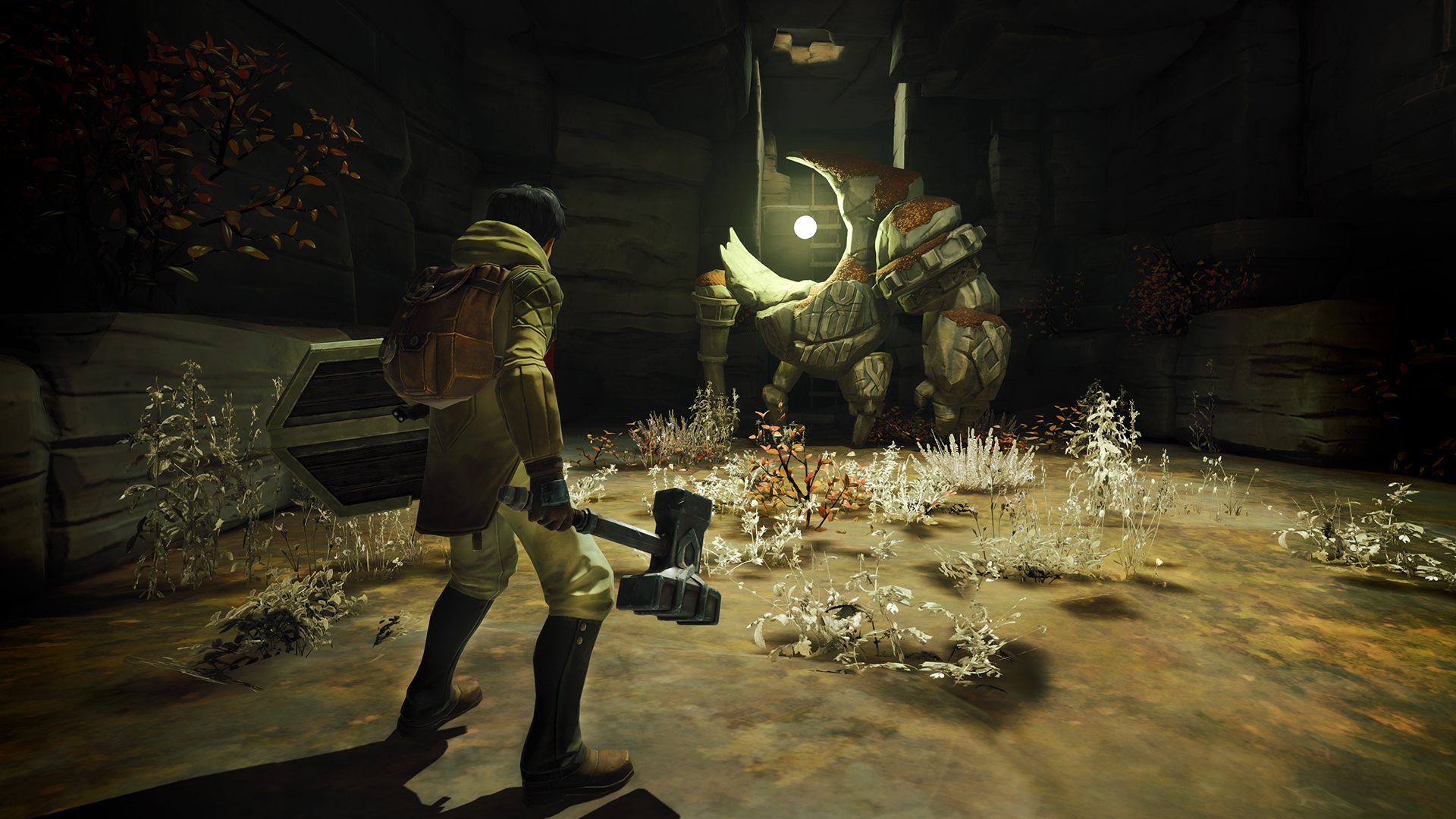I can admit when I’m wrong and if you ask anyone on the UploadVR team they’ll tell you that after I first saw Chronos on Sunday at the Oculus Game Day Showcase, I was skeptical. I’ve played 3rd person action games in VR like Herobound, Adventure Time, and Lucky’s Tale, and some of my favorite games are Zelda but my gut was telling me that Chronos was suffering from what felt like forced-VR integration. Then after playing it for myself and experiencing the subtly of what VR brings to the table, my tune has changed quite a bit.
Unlike most VR games, which seem to rely too heavily on the gimmicky aspects of VR, the standout features of Chronos have nothing to do with it being a VR game. For example, each time you die in the game, your character is sent back to the last checkpoint and is one year older than they were before. Narratively, it fits the theme of having to conquer the dungeon and complete your quest – you’re forced to leave and return once you’re older. But this also represents a clever gameplay mechanic that evolves your character over time.
As you grow in age, you not only get stronger and more mature, but you also start to get slower and heavier as your body and agility suffer the consequences. Additionally, your mind matures which results in your magical aptitude increasing over time as well.
After speaking with the team at Gunfire Games about Chronos, their passion and inspirations are abundantly clear. Members of the team have a history of working on third-person action games like the Darksiders series, but adapting that concept to VR is no small task. Everything from the user interface to the camera and how the game displays and communicates puzzles is different on a fundamental level.
A great demonstration of the thought and care that went into developing Chronos for VR is how carefully calculated the camera transitions between rooms is. In some other third-person VR games, you might have to swing your head from one side of the room to the other when you entered a new room just to find your character again. But in Chronos, they subtly shift the camera’s perspective so that your view isn’t disrupted and the flow of gameplay can continue as easily as possible.
Combat feels very similar to the Dark Souls series, as you have both light and heavy attacks, with a shield for blocking and a dodge roll/evasion mechanic for avoiding attacks. You can also lock onto an switch enemies easily as well during combat, which is extremely important to make sure you’re blocking the correct enemies at the correct time.
The first time I died during my demo was because I got overwhelmed by a mixture of melee-based and range-based enemies in a confined space. It also underscored the downside of third-person games in VR, as I felt pressured to constantly look around the room, which forced me to lose track of the action at times. It’s frustrating from a gameplay perspective, but it forces you to be more aware of and careful about your surroundings.
The developers stated that an average playthrough of the game should run around 13 hours long, or more, depending on your playstyle. Out of all the titles in Oculus’ launch lineup, save for maybe EVE: Valkyrie and Lucky’s Tale, Chronos is the most robust and traditional game available. It doesn’t force any VR gimmicks down your throat or yell, “Hey! This is a VR game! Move around and do stuff!” which feels awfully refreshing. But at the same time, I couldn’t help but wonder if Chronos would feel more natural outside of VR. The menu system for example, is just a giant flat screen that pops up in the middle of your field of view, obstructing everything behind it. It’s one of the most obtuse and non-VR friendly menu systems I’ve seen.
Chronos is undoubtedly the type of game that early adopters of VR are looking forward to. It’s got a good amount of first-time playthrough content, it’s a fully fleshed out, narratively-driven, action adventure game, and it’s not uncomfortable or awkward to get into. It may not show the revolutionary potential for VR to influence how we engage and interact with the medium of video games, but it’s proof that not all VR games have to lean on the gimmick of strapping an HMD to your face to be entertaining.




























